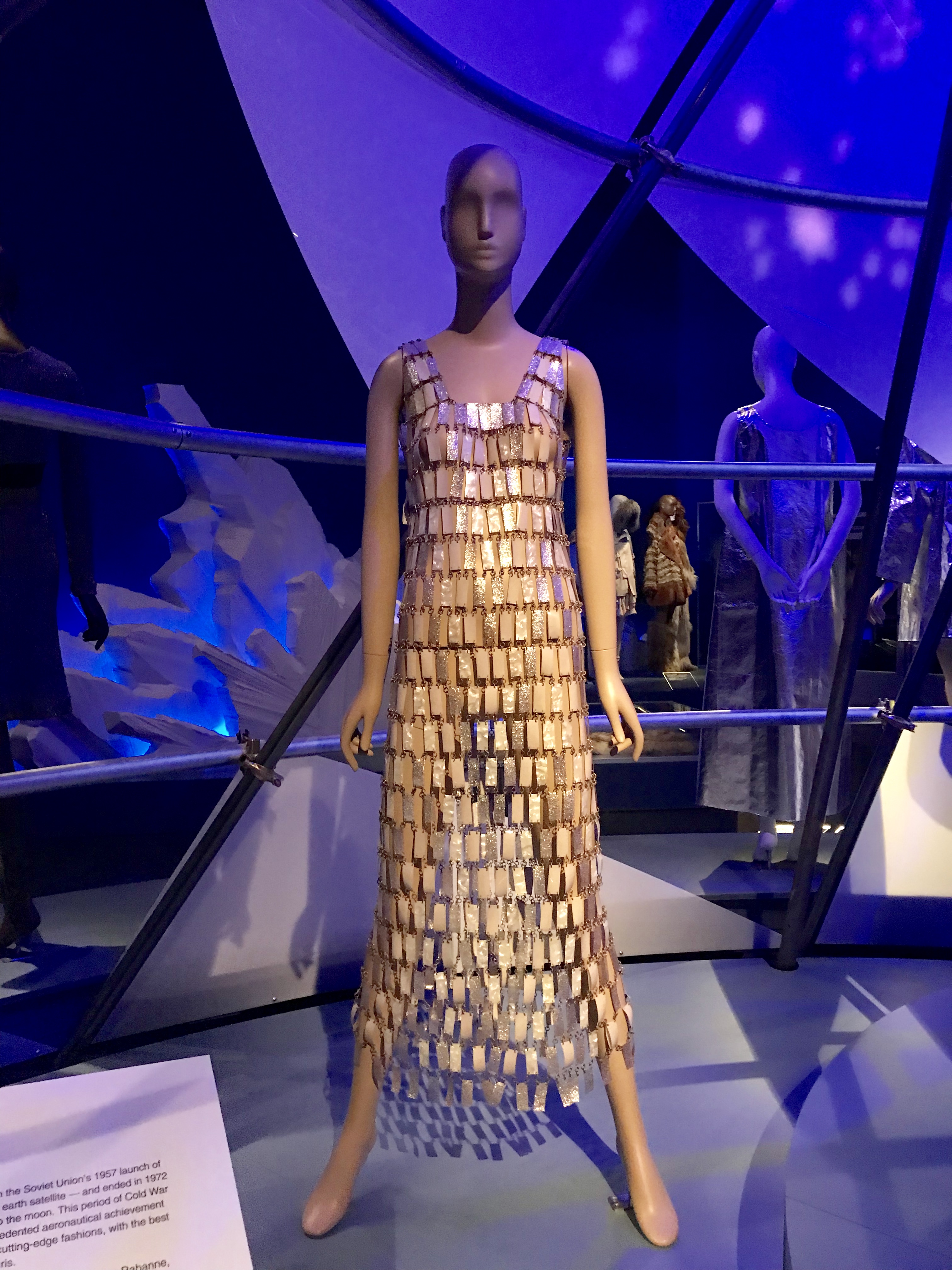From Expedition: Fashion from the Extreme at The Museum at FIT, I have selected Paco Rabanne’s wedding dress. The dress is made using plastic and metal. Rabanne experimented with materiality in his design. This dress design was included into the exhibition because Rabanne brought upon a new respect upon the incorporation of new and “unexpected” materials inspired by ocean exploration. While the dress defines history, it is also incorporated into the exhibition due its aesthetic appeal. The metal panels of the dress shine and reflect off the surrounding blue fluorescent lighting. While fashion designers at the time started to experiment with new material, like wetsuit material—neoprene, Rabanne started to explore the deeper roots that make up the depths of Earth’s oceans. While one would not expect a dress to be made using plastic and metal—this idea goes against the stereotype that garments must be created solely through fabrics. In fashion history and culture, Rabanne’s wedding dress has influenced the successful use of different materials into fashion design. Also, the wedding dress has contributed to fashion history and culture through its inspiration of design from the natural environment, ocean and the exploration of the deep sea. While a wedding dress is thought to be delicate, dainty, and feminine, Rabanne’s version juxtaposes that using more rugged and hard materials—plastic and metal. Because of Rabanne’s choice of material, the dress is not tight or form-fitting, but it still falls straight against the natural curves of a human body, reflecting femininity.

Leave a Reply